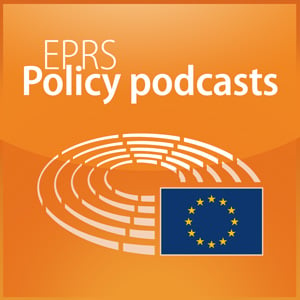Review of the EU ETS: 'Fit for 55' package
European Parliament - EPRS Policy podcasts
European Parliament Webmaster
4.8 • 13 Ratings
🗓️ 4 March 2022
⏱️ 9 minutes
🧾️ Download transcript
Summary
- Original publication on the EP Think Tank website
- Subscription to our RSS feed in case your have your own RSS reader
- Podcast available on Deezer, iTunes, TuneIn, Stitcher, YouTube
Source: © European Union - EP
Transcript
Click on a timestamp to play from that location
| 0:00.0 | Welcome to the European Parliamentary Research Service Podcasts. |
| 0:05.0 | In this podcast, we'll talk about the review of the EU emissions trading system to align it with the new, more ambitious, EU climate targets. |
| 0:14.0 | Want to know more? Stay with us. |
| 0:17.0 | The European Union's emissions trading system, or ETS, is the world's biggest scheme for trading |
| 0:26.2 | greenhouse gas emissions allowances. |
| 0:29.0 | Launched in 2005, this cap and trade policy has gone through several reforms and is now |
| 0:35.8 | in its fourth trading phase. |
| 0:37.4 | It remains a cornerstone of |
| 0:39.4 | the EU's policy to combat climate change and its key tool for reducing greenhouse gas emissions |
| 0:45.7 | in a cost-effective way. It operates in all EU member states, as well as Iceland, Liechtenstein and |
| 0:52.7 | Norway, regulating around 10,000 power plants and factories |
| 0:56.2 | and covering over 40% of the EU's greenhouse gas emissions. |
| 1:01.2 | That's right. And since 2012, it also covers the aviation sector. |
| 1:08.3 | But how does the system work exactly? |
| 1:11.7 | Well, the principle is simple. |
| 1:14.3 | The EU sets a cap on the amount of greenhouse gas emissions that can be emitted each year, |
| 1:19.6 | and companies need to hold allowance permits for every ton of CO2 they emit per year. |
| 1:25.3 | These permits or allowances are partly auctioned and partly given for free |
| 1:29.3 | to industries at risk of carbon leakage, and they can be traded. To incentivise companies to become more |
| 1:36.4 | energy efficient, the total cap decreases every year. And member states must use at least half of the |
| 1:43.1 | revenues from auctioning allowances to fight climate change. |
| 1:46.9 | To support energy-intensive industrial sectors and the electricity sector in their innovation and investment challenges, |
... |
Please login to see the full transcript.
Disclaimer: The podcast and artwork embedded on this page are from European Parliament Webmaster, and are the property of its owner and not affiliated with or endorsed by Tapesearch.
Generated transcripts are the property of European Parliament Webmaster and are distributed freely under the Fair Use doctrine. Transcripts generated by Tapesearch are not guaranteed to be accurate.
Copyright © Tapesearch 2025.

